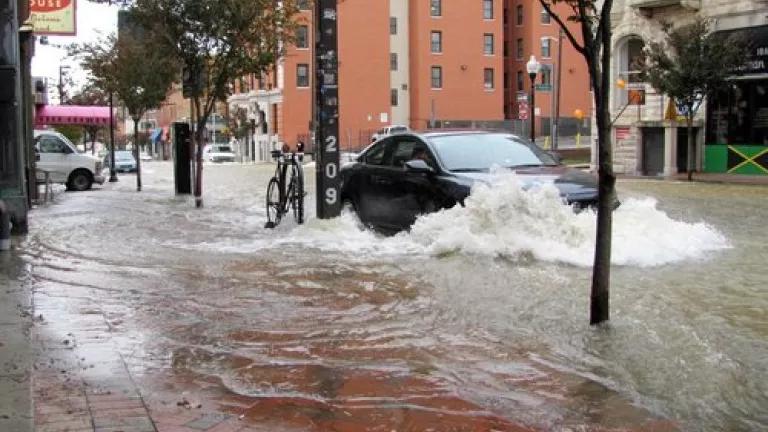No More Money Down the Drain: New Website Tracks New Wave of State Policies on Water Loss

From New England to the Pacific, states across the country are taking new interest in the loss of drinking water from public water systems, and adopting sensible policies for communities to report and reduce these losses. Tracking this new wave of state policy will be made easier with Cutting Our Losses, NRDC's new interactive website, where viewers can easily scroll over the US map to see which states are leading the way in reporting and reducing urban water losses, and which ones are not yet engaged. Links to local water loss reports are also provided.
Water main break, Charles Street, Baltimore, MD July 2012 Photo: Mark Reutter/Baltimore Brew
All water distribution systems lose water, and water main breaks and unseen leaks act like a "tax" on the cost of drinking water and the reliability of water service. A sustainable community needs a reliable and efficient water delivery system—for public health, fire safety, and good environmental stewardship. Conversely, excessive water losses place additional burdens on water sources and can cast doubt upon a community's ability to manage its financial and physical assets.
The states currently leading this new wave of smart water reporting policy, including Georgia, Tennessee, and California, are all requiring annual water loss reports from local water suppliers using a standardized format developed by the American Water Works Association (AWWA), the principal trade group for drinking water utilities. Free software is available from AWWA for local utilities to enter their individual system's data and generate water loss estimates and performance ratings.
Engineers are fond of saying "You can't manage what you can't measure," and for decades water losses from buried water mains were accepted as an inevitable cost of doing business, if losses were kept under 10%, 15%, or 20% -- different benchmarks were used in different states. But today, more meaningful and actionable assessments are possible. AWWA is now telling its member utilities to forget about percentages, and instead calculate the volume of water losses, the cost of loss reduction strategies, and the amount of water losses that might be cost-effectively reduced.
In California, for example, a first order statewide estimate is that about 350,000 acre-feet of treated drinking water is currently going to waste each year that could be cost-effectively saved—a volume that is nearly twice the entire annual water use of San Diego, the state's second largest city. With California now facing acute water shortages after the driest year in its recorded history—and a glimpse of the "new normal" produced by a changing climate—the time has come to measure, manage, and eliminate the unnoticed and unnecessary waste of water that is happening literally right under foot.
Water scarcity is one factor behind these new state policies, but by no means the only one. Water main breaks are typically accompanied by costly emergency repairs, street closings, traffic disruptions, loss of water pressure, curtailment of service, and boil-water advisories. Damage to vehicles and private property is common. Consumers bear these costs both indirectly and directly, through disruption and delay, water bills, taxes, and in some cases, uncompensated damages. States are asked to help finance system upgrades, but none have sufficient resources to simply replace all leaky pipes. Thus, the need for a more objective accounting of water losses and a more strategic understanding of loss reduction strategies is gaining attention across the country.
Cutting Our Losses will be frequently updated to track the adoption of new state policies, provide links to additional water audits, and highlight the latest developments in the field of water loss auditing and control. Utility personnel and public officials will find useful links to specific policies and regulations adopted in other states. And anyone new to the topic can start learning about what water loss means to his or her own community with 8 Questions for Every Water Utility, and bring the discussion home.
The water loss revolution has begun! Catch the wave at Cutting Our Losses.
This is one in a series of blogs accompanying NRDC's launch of a new website which tracks state policies to audit and reduce leakage from public water systems. For more on this issue and our new landing page, see today's blogs by my colleagues Larry Levine and Karen Hobbs.

